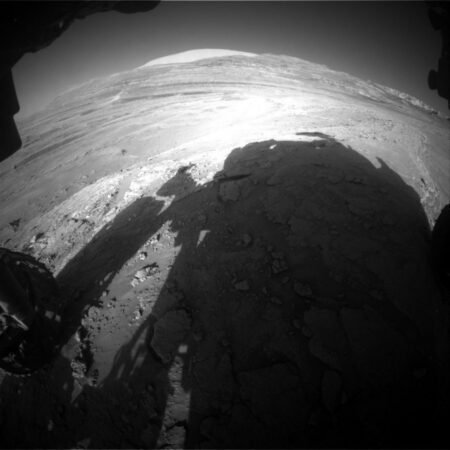Quick Takeaways
-
NISAR Launch Success: Celebrating the successful launch of the NISAR Earth observation satellite, showcasing collaboration between NASA, JPL, and ISRO.
-
Mars Winter Challenges: The Curiosity rover navigates a rugged winter in Mars, optimizing power for heating while conducting scientific investigations from a safe ridge location.
-
Scientific Investigations: The team conducts multiple analyses on geological targets, "El Salto" and "Llullaillaco," to uncover chemical differences in ridge-forming materials and surrounding structures.
- Atmospheric Observations: Continued monitoring of atmospheric conditions, including dust devils and temperature, while preparing for further exploration of the hollows’ chemical properties.
Curiosity Rover continues to make strides on Mars despite winter challenges. Recently, it parked on a ridge informally known as the “autobahn.” Interestingly, this area proved bumpier than expected. The team of rover drivers opted for a detour, allowing Curiosity to reach a stable position. This strategic choice provides stunning views of the surrounding terrain, including the majestic Mount Sharp.
The current exploration focuses on the ridge’s materials. Curiosity utilizes instruments like APXS, MAHLI, and ChemCam to examine a target called “El Salto.” Scientists are eager to uncover the chemical composition of this formation. Observations indicate subtle variations in color and texture, suggesting possible differences at the chemical level.
Meanwhile, research extends beyond chemistry. The Mastcam instrument documents another site known as “Llullaillaco.” This location features a small mound and surrounding veins. Additionally, “Cementerio De Tortugas” captures intriguing sand ripples. The intersection of the ridge, termed “Villa Abecia,” also piques interest.
Moreover, atmospheric studies remain a priority. Curiosity monitors for dust devils and clouds, collaborating with the European Space Agency’s Trace Gas Orbiter. Alongside, it tracks wind and temperature changes. The DAN instrument investigates water content in Martian rocks beneath the rover.
As Curiosity completes its current observations, it will move off the ridge but stay within a hollow area. This next phase aims to reveal chemical differences between materials in hollows and ridges. Such findings could deepen our understanding of Martian geology and weathering processes.
Curiosity’s ongoing research not only enhances our knowledge of Mars but also reflects advancements in technology that benefit Earth-bound applications. By exploring distant worlds, scientists gain insights that can foster innovation in areas such as materials science and atmospheric studies.
Expand Your Tech Knowledge
Stay informed on the revolutionary breakthroughs in Quantum Computing research.
Explore past and present digital transformations on the Internet Archive.
SciV1

